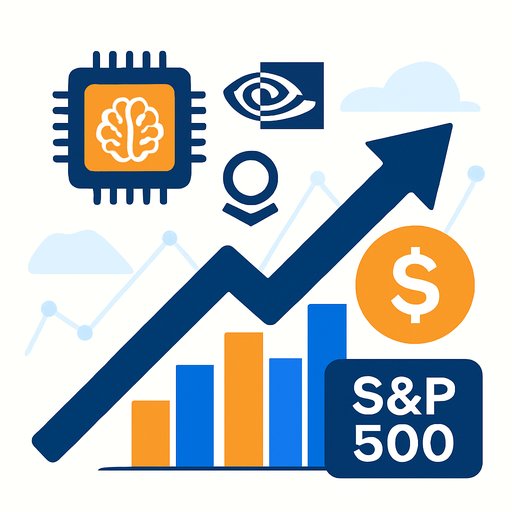AI Stocks Lead Wall Street Rebound as Nvidia and Palantir Surge
Wall Street snapped back Monday, recovering most of last week's pullback. As of 1:15 p.m. Eastern, the S&P 500 rose 1.3%, reclaiming roughly three-quarters of last week's slide. The Dow added 245 points (0.5%), and the Nasdaq jumped 2.1%.
Nvidia powers the bounce; AI trade recharges
Nvidia was the day's main catalyst, up 4.8% after being at the center of last week's drop. The move reflects a familiar tug-of-war: strong AI demand versus mounting concern that prices have run ahead of fundamentals, with some comparing the setup to the dot-com era.
TSMC's U.S.-listed shares climbed 3.1% after the chipmaker said October revenue rose nearly 17% year over year. Solid growth, but a step down from earlier clips, which keeps attention on supply chain pacing and order visibility.
Palantir jumped 8.9% for the biggest S&P 500 gain, clawing back losses after a profit beat last week. The market is rewarding clear earnings execution across AI-adjacent names.
If you build models and dashboards around AI trends in finance, this curated roundup may help you track practical tools: AI tools for finance.
Health insurers lag on policy risk
Insurers fell as uncertainty lingered over expiring health care tax credits during the ongoing U.S. government shutdown. The Senate has taken early steps to end the impasse, but headlines remain volatile. Over the weekend, President Donald Trump suggested on social media that funds sent to "money sucking" insurance companies should be redirected to people to buy their own coverage.
Humana fell 3.3%, Elevance dropped 3.8%, and Centene slid 7.6%, weighing on broader gains.
Shutdown fallout, rates path, and market tone
Shutdown effects intensified after thousands of flights were canceled over the weekend, as some unpaid air traffic controllers stopped showing up. The bigger market issue: delayed economic reports. A release backlog could jar expectations for rate cuts once data hits, especially if it challenges the current soft-landing view.
Consensus still leans toward additional Fed rate cuts to support a slowing job market, though the Fed has been clear it can pause if inflation flares. For policy context, see the Fed's overview of monetary policy: Federal Reserve Monetary Policy.
In rates, the 10-year Treasury yield edged down to 4.10% from 4.11% Friday.
Earnings breadth supports sentiment
With government data on hold, earnings are doing the heavy lifting. Tyson Foods rose 1.6% after posting a stronger-than-expected quarter, helped by 11% to 17% price increases in pork and beef.
About four out of five S&P 500 companies reporting summer results have topped estimates, per FactSet. That beat rate matters more this cycle: after big price gains since April, companies needed to justify multiples. Guidance has also been broadly constructive, with 2026 earnings expectations nearly back to pre-"Liberation Day" tariff-announcement levels.
Overseas: chip tailwinds lift Asia and Europe
Equities rallied across much of Europe and Asia. South Korea's Kospi gained 3%, with AI-linked memory producer SK Hynix up 4.5% and Samsung Electronics up 2.8%. The AI supply chain continues to draw flows well beyond U.S. megacaps.
What this means for portfolios
- AI leaders remain the swing factor. Expect higher volatility but strong dip-buying interest while earnings stay intact.
- Watch insurers and policy headlines. Tax credit clarity and shutdown timing can move managed care in chunks.
- Rate cut odds guide multiples. A hotter inflation print, once released, could cap tech's rerating.
- Earnings quality matters. Beat-and-raise is getting rewarded; misses carry more downside than usual.
- Keep an eye on the 10-year. A stable-to-lower yield backdrop is a tailwind for long-duration growth names.
For those building skill sets around AI's impact on markets and workflows, here's a frequently updated catalog of courses from leading providers: Latest AI courses.
Your membership also unlocks:






